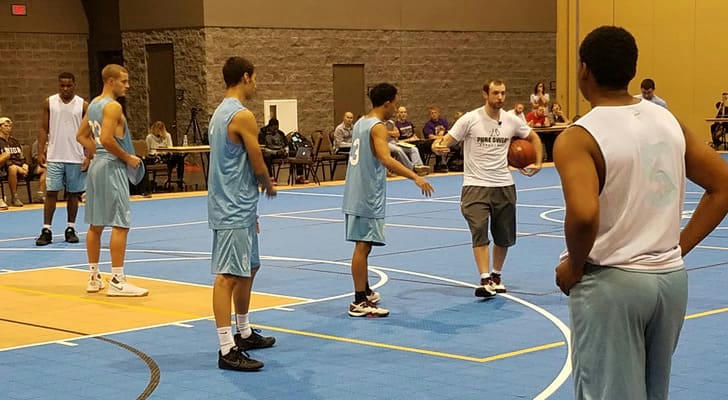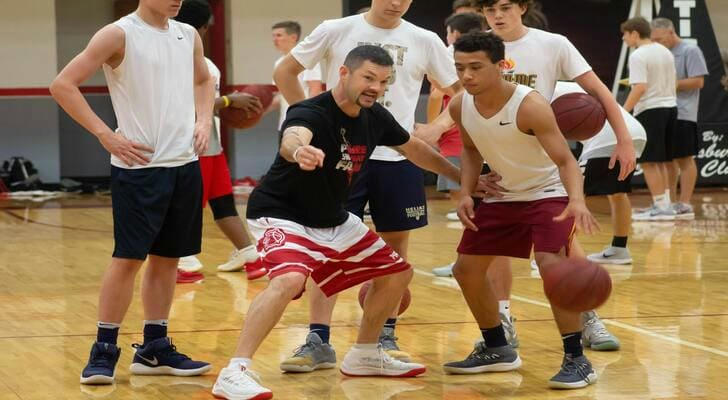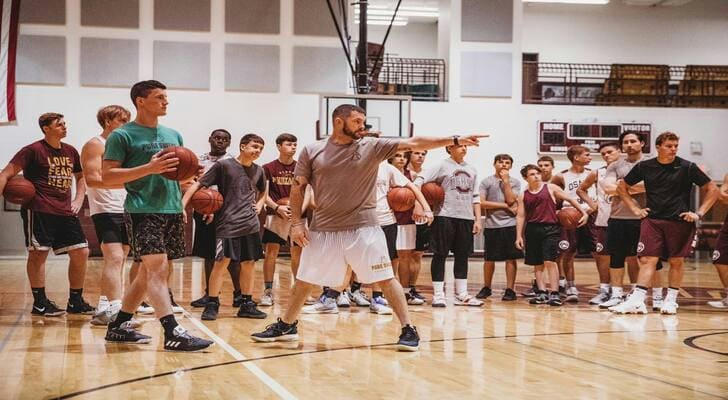High-quality basketball courses
In the U.S., basketball training is more than skill development—it’s an ecosystem blending science, career resources, and personal growth. From youth development to elite player refinement, quality programs transform raw talent into competitive prowess. Yet, navigating the sea of training options requires discernment. This article breaks down program structures, institutional strengths, and evaluation strategies to guide aspiring players at every level.

I. Core Types of U.S. Basketball Programs and Target Audiences
Programs vary by age, skill level, and goals, each offering distinct curricula and resources.
1. Youth Foundational Skills Programs (Ages 8-14)
Objective: Build proper mechanics, foster passion, and develop athleticism.
Leading Institutions:
YMCA Youth Basketball: Nationwide programs with 30-minute skill drills (dribbling, passing, shooting) + 20-minute scrimmages.
Basketball City NYC: Uses “small-sided games” on reduced courts to maximize touches and accelerate skill acquisition.
Program Highlights:
Gamified Learning: Drills like “Capture the Flag Dribbling” or team shooting challenges keep engagement high.
Parent Involvement: Monthly family training days teach parents at-home practice techniques.
2. Competitive Advancement Programs (High School to College)
Objective: Prepare for varsity teams, NCAA scholarships, or professional leagues.
Leading Institutions:
IMG Academy Basketball Program: A top-tier high school program featuring:
Skill Sessions: Morning shooting drills (500 jump shots + biomechanical analysis).
Tactical Training: Afternoon team drills (zone defense, fast-break execution).
Strength Conditioning: Evening plyometrics (force-velocity profiling to optimize jump mechanics).
Pro Hoops Inc.: Position-specific training (e.g., guard pick-and-roll decision-making, center post moves).
Program Highlights:
NCAA Compliance Guidance: Helps students meet academic eligibility requirements (e.g., core GPA thresholds).
Film Analysis: Hudl software breaks down player performance, comparing metrics to NCAA peers.
3. Adult Elite Programs (18+ Advanced Players)
Objective: Help amateurs break plateaus or retired athletes maintain performance.
Leading Institutions:
Chris Brickley’s Black Ops Training: Renowned for high-intensity 1-on-1 sessions, including:
NBA-Level Scrimmages: Current pros join as practice opponents.
Weakness Targeting: Daily drills like 200 non-dominant hand finishes.
PURE Sweat Basketball: Focuses on “skill combos” (e.g., step-back threes into Euro steps) under trainer Drew Hanlen.
Program Highlights:
Pro Recovery Protocols: Cryotherapy and NormaTec compression boots accelerate muscle repair.
Customized Periodization: Adjusts intensity based on tournament schedules (e.g., amateur leagues).
II. Four Pillars of Elite Program Design

Top-tier programs prioritize efficiency through structured, science-backed methodologies.
1. Tiered Skill Development
Placement Testing: Hoops Academy categorizes students into Levels 1 (basic) to 5 (elite) via dribbling obstacle courses and shooting assessments.
Progress Tracking: Bi-monthly skill reviews trigger upgrades or remedial plans.
2. Technology Integration
Motion Analysis Tools:
DARI Motion: 3D sensors analyze shooting form to correct kinetic chain errors.
HomeCourt App: iPhone LiDAR maps dribbling paths, reporting speed and agility metrics.
Data Transparency: Dedicated apps let students review shooting heatmaps and fatigue scores post-session.
3. Multidisciplinary Training
Sports Science Modules: EXOS programs include:
Neuromuscular Activation Drills: BlazePod reaction lights improve defensive lateral quickness.
Nutrition Workshops: Teach carb-loading strategies and rehydration protocols.
Mental Toughness Training: Sports psychologists simulate high-pressure scenarios (e.g., clutch free throws with crowd noise).
4. Competitive Exposure
High-Level Games:
IMG Academy: Weekly matches against top 50 national high school teams.
Basketball City: Adult leagues (City League) connect players to amateur scouts.
Pro Pathways: Partnerships with NBA G League or overseas teams offer tryout opportunities.
III. Five Criteria for Evaluating Program Quality
Cut through marketing hype by assessing these tangible factors.
1. Curriculum Transparency
Must-Haves:
Written syllabi detailing weekly themes (e.g., ball-handling, defensive footwork) and skill/strategy/conditioning ratios.
Published progress metrics (e.g., shooting percentage improvements, vertical leap gains).
Red Flags: Vague descriptions like “star coaching” without concrete plans.
2. Coach Credentials and Pedagogy
Qualifications: Prioritize USA Basketball-certified or NCAA-experienced coaches.
Teaching Style: Observe if coaches use “demonstrate-practice-feedback” loops during trial sessions.
3. Facilities and Tech Infrastructure
Safety Standards: Check for maplewood courts, shock-absorbent rims, and on-site AEDs.
Tech Tools: Ensure access to video analysis systems or wearable sensors.
4. Alumni Outcomes and Career Support
Verifiable Success: Request NCAA scholarship recipient lists or pro league contracts.
Networking Events: Confirm if programs host college coach meetups or scout showcases.
5. Cost Efficiency and Added Value
Fee Structure: Clarify inclusions like assessments, nutrition consults, or injury insurance.
Refund Policies: Reputable programs often offer full refunds if unsatisfied within the first month.
IV. Avoiding Pitfalls: Spotting Low-Quality Programs

1. Fake “All-Star Coach” Claims
Verification: Cross-check coach backgrounds via LinkedIn or NCAA/NBA databases.
Case Study: A 2023 Los Angeles program was sued for falsifying coach resumes, costing families thousands.
2. Overhyped Social Media Campaigns
- Risk: High Instagram followers ≠ quality. Prioritize established brick-and-mortar institutions over viral “influencer camps.”
3. One-Size-Fits-All Curricula
Ideal Approach: Position-specific training (e.g., guard vs. center drills).
Warning Sign: Mandating 1,000 daily three-pointers for non-shooters, risking burnout.
Conclusion
Choosing a basketball program in the U.S. means selecting a “growth ecosystem”—one that aligns technical rigor with career opportunities. Whether aiming for the NCAA or personal mastery, success hinges on matching your goals to a program’s strengths. By scrutinizing curricula, facilities, and outcomes, players can find the accelerator they need. Remember: The best programs don’t just teach skills—they forge champions’ mindsets and habits.
